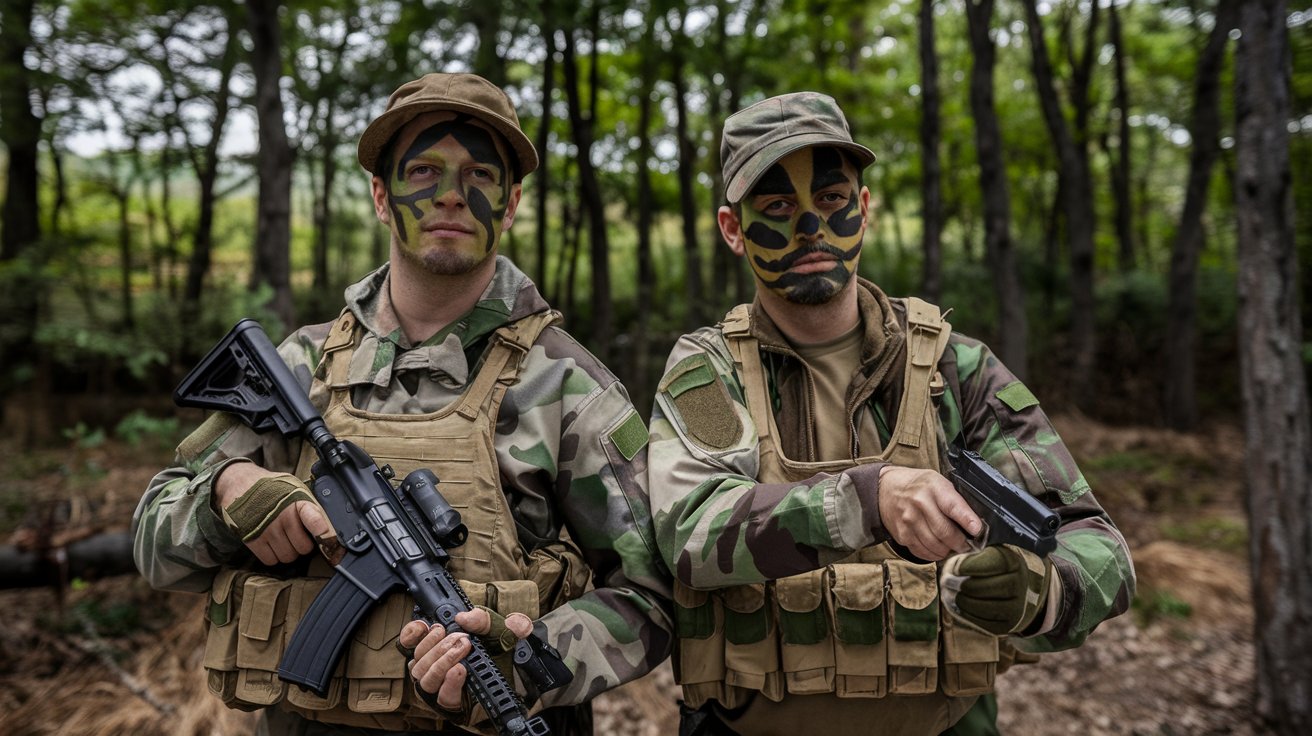
Resistance fighters have always captured our imagination with their bravery and determination. Who were these courageous individuals, and what drove them to stand up against oppressive regimes? Resistance fighters often operated in the shadows, using guerrilla tactics, espionage, and sabotage to undermine their enemies. They came from all walks of life—students, farmers, teachers, and even former soldiers. Their stories are filled with acts of heroism, sacrifice, and resilience. From the French Resistance during World War II to modern-day freedom fighters, these individuals have left an indelible mark on history. Let’s delve into 35 fascinating facts about these unsung heroes who risked everything for freedom and justice.
Key Takeaways:
- Resistance fighters, like the French and Polish movements in WWII, used sabotage, espionage, and guerrilla warfare to disrupt enemy forces and save lives, inspiring modern military tactics.
- Unsung heroes of resistance movements, from the Belgian to the Norwegian, played crucial roles in sabotaging enemy operations and aiding Allied forces, shaping the way conflicts are approached today.
The Role of Resistance Fighters
Resistance fighters have played crucial roles in various conflicts throughout history. These brave individuals often operate behind enemy lines, using guerrilla tactics to disrupt and undermine occupying forces. Here are some fascinating facts about these unsung heroes.
- During World War II, the French Resistance was instrumental in gathering intelligence and aiding Allied forces.
- The Polish Home Army was one of the largest resistance movements in Europe, with over 400,000 members.
- Women played significant roles in resistance movements, often serving as couriers, spies, and even combatants.
- The Danish Resistance successfully sabotaged Nazi efforts to deport Danish Jews, saving thousands of lives.
- In Yugoslavia, the Partisans led by Josip Broz Tito managed to liberate their country from Axis occupation without significant outside help.
Tactics and Strategies
Resistance fighters often employ unconventional tactics to achieve their goals. These methods can range from sabotage to espionage, making them a formidable force against their enemies.
- Sabotage was a common tactic, with resistance fighters targeting railways, factories, and communication lines.
- Espionage played a crucial role, with resistance members gathering and relaying vital information to Allied forces.
- Guerrilla warfare allowed resistance fighters to engage in hit-and-run attacks, minimizing their exposure to enemy forces.
- Propaganda was used to boost morale and spread information among occupied populations.
- Assassinations of key enemy figures were sometimes carried out to disrupt command structures.
Famous Resistance Fighters
Some resistance fighters have become legendary figures, their stories inspiring future generations. Here are a few notable individuals.
- Nancy Wake, known as the "White Mouse," was a highly effective spy and saboteur in the French Resistance.
- Witold Pilecki voluntarily entered Auschwitz to gather intelligence and organize resistance within the camp.
- Sophie Scholl, a member of the White Rose group, distributed anti-Nazi leaflets and was executed for her efforts.
- Tuvia Bielski led a group of Jewish partisans in Belarus, saving over 1,200 Jews from the Holocaust.
- Jan Karski, a Polish courier, provided some of the first eyewitness accounts of Nazi atrocities to Allied leaders.
Impact on Modern Warfare
The legacy of resistance fighters continues to influence modern military tactics and strategies. Their contributions have shaped the way conflicts are approached today.
- Modern special forces units often draw inspiration from the tactics used by resistance fighters.
- The concept of asymmetric warfare, where smaller forces use unconventional methods to combat larger armies, has its roots in resistance movements.
- Psychological operations, or PSYOPS, are used to influence enemy morale and behavior, a tactic perfected by resistance fighters.
- Cyber warfare can be seen as a modern extension of the sabotage tactics used by resistance movements.
- The importance of local support and intelligence, emphasized by resistance fighters, remains a key factor in modern military operations.
Cultural Depictions
Resistance fighters have been immortalized in various forms of media, from books to movies. These portrayals help keep their stories alive and educate new generations about their sacrifices.
- The movie "Inglourious Basterds" features a fictional group of Jewish-American resistance fighters during World War II.
- "The Book Thief" by Markus Zusak tells the story of a young girl in Nazi Germany who becomes involved with the resistance.
- The video game "Wolfenstein" series revolves around an alternate history where resistance fighters battle a victorious Nazi regime.
- "The Resistance Banker" is a Dutch film based on the true story of a banker who financed the Dutch Resistance.
- "Band of Brothers" includes episodes depicting the interactions between Allied soldiers and French resistance fighters.
Resistance Movements Around the World
Resistance movements have emerged in various countries and conflicts, each with its unique characteristics and challenges. Here are some notable examples.
- The Viet Cong used guerrilla tactics to fight against American and South Vietnamese forces during the Vietnam War.
- The Irish Republican Army (IRA) fought for Irish independence from British rule, using both political and military means.
- The Mau Mau Uprising in Kenya saw local fighters resist British colonial rule in the 1950s.
- The Afghan Mujahideen resisted Soviet occupation during the 1980s, eventually leading to the withdrawal of Soviet forces.
- The Kurdish Peshmerga have fought for Kurdish autonomy and independence in the Middle East for decades.
Unsung Heroes
Many resistance fighters remain unknown, their contributions overshadowed by more famous figures. These unsung heroes deserve recognition for their bravery and sacrifices.
- The Belgian Resistance played a crucial role in sabotaging German supply lines and aiding downed Allied pilots.
- The Greek Resistance fought against Axis occupation, conducting sabotage operations and providing intelligence to the Allies.
- The Norwegian Resistance disrupted German operations and provided valuable intelligence to the Allies.
- The Italian Resistance fought against both Nazi and Fascist forces, contributing to the eventual liberation of Italy.
- The Dutch Resistance conducted sabotage operations, provided intelligence, and helped hide Jewish families from the Nazis.
The Legacy of Resistance Fighters
Resistance fighters have left an indelible mark on history. Their bravery, determination, and sacrifices have shaped the world in ways we often take for granted. From the underground networks of World War II to modern-day activists, these individuals have shown that standing up against oppression is both necessary and noble. Their stories remind us of the power of unity and the importance of fighting for justice. As we reflect on their contributions, let's honor their memory by continuing to advocate for freedom and equality. Their legacy lives on in every act of resistance, big or small, that challenges injustice. By learning about their struggles and triumphs, we gain a deeper appreciation for the freedoms we enjoy today. Let's carry forward their spirit of resilience and courage in our own lives.
Frequently Asked Questions
Was this page helpful?
Our commitment to delivering trustworthy and engaging content is at the heart of what we do. Each fact on our site is contributed by real users like you, bringing a wealth of diverse insights and information. To ensure the highest standards of accuracy and reliability, our dedicated editors meticulously review each submission. This process guarantees that the facts we share are not only fascinating but also credible. Trust in our commitment to quality and authenticity as you explore and learn with us.


